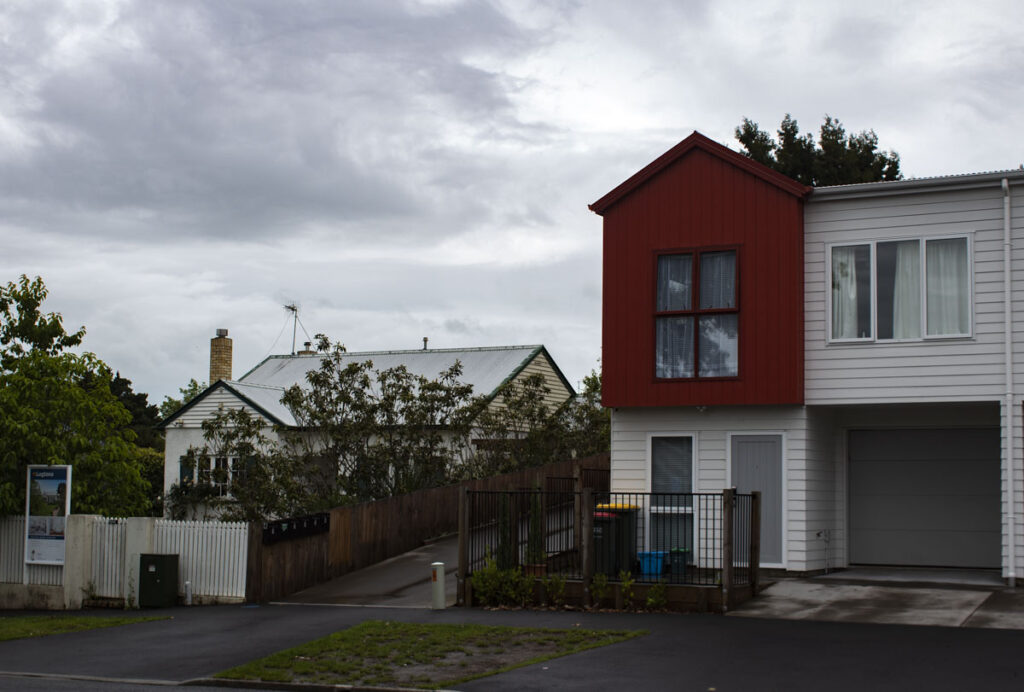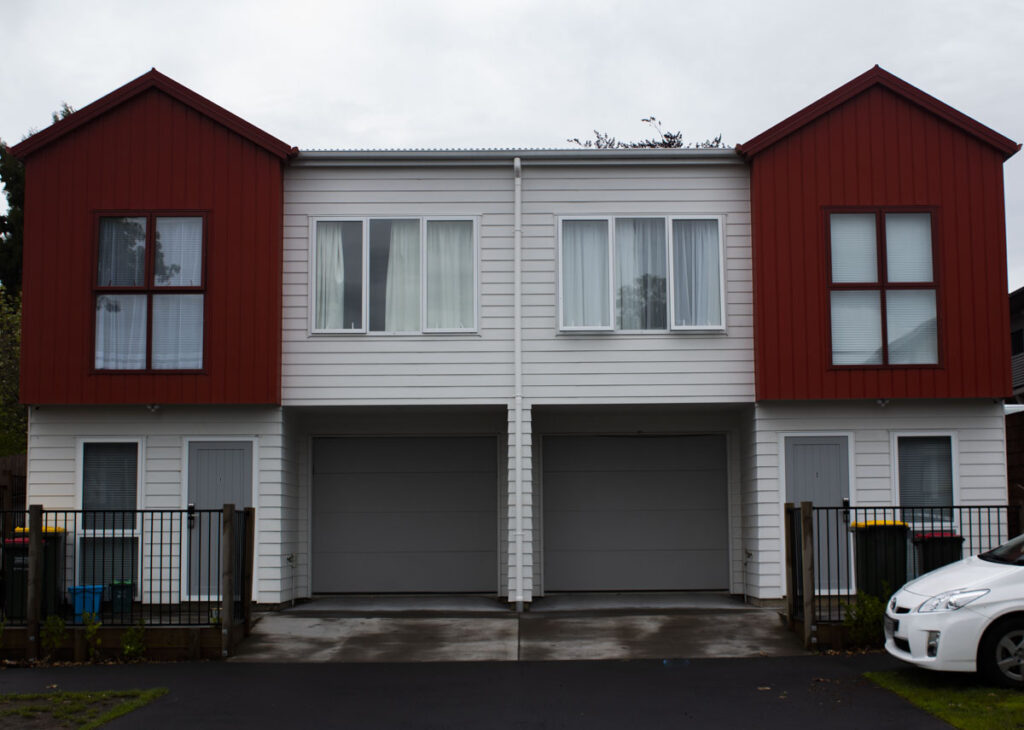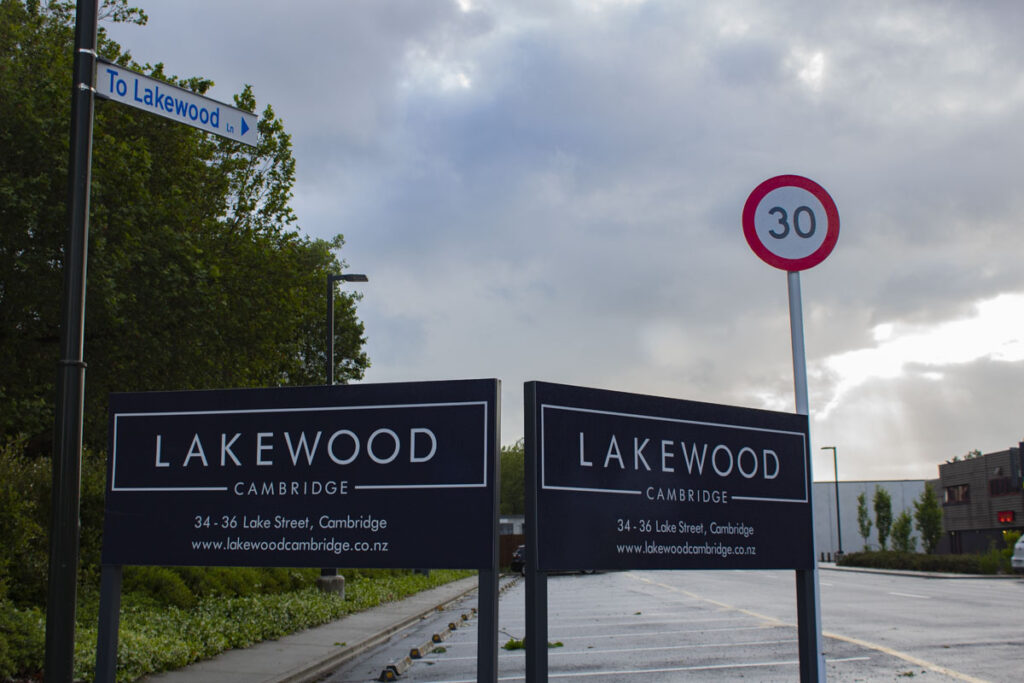Beyond the Pavlova Paradise
As new rules allow more housing intensification, New Zealand enters a conversation about how we want to shape our cities.

“We shape our buildings, and thereafter they shape us.” Winston Churchill famously said to the House of Lords in 1943.
The sentiment was pertinent then as it is now; while no Houses of Commons have been bombed to smithereens in Aotearoa of late, there are huge changes happening in the way we’re building the spaces we live and work in as new housing intensification rules spark debate around how we want our cities shaped.
Directives from the NZ Government this year mean some councils, including Waikato District, are forced to make changes to their district plans, cutting much of the red tape around intensifying housing in the area.
The aim is to address the housing shortage by getting more people into more homes, as well as create sustainable cities with less sprawl. But the changes have had a poor reception from the councils they affect, who claim the character and charm of their communities will be compromised by the proposed intensification.

Allan Sanson, former Waikato District Council Mayor, says it was the ‘style’ of the government’s proposed changes that are the issue, and that the backlash to the rules doesn’t come from NIMBYism.
“I’ve never ever seen this before; they’ve just cut across what would be deemed as good process” he said.
“We had no idea this was coming, it just turned up one day and said ‘we’re tabling a piece of legislation that will force you to do this’.”
Sanson says the councils are not only concerned about loss of character with large apartment buildings overshadowing older heritage homes, but also the infrastructure needed for the planned level of density.
Intensifying housing, or ‘building up’, can be a difficult concept to market, especially to those who already own homes. It’s easy to conjure up images of brutalist-style high-rises designed to house the masses in the cheapest, ugliest manner. Given New Zealand’s attachment to separateness, it’s unsurprising we have little experience in building good medium and high density.
While there’s agreement that the changes were rushed and not ideal, there is a brighter future to higher density housing.


Stark Property and Engas Developments Limited are two of the companies forging the way to a higher density Waikato, with developments in Cambridge, Hamilton, and other parts of the Waikato. A far cry from the cheap monoliths feared by the NIMBY populous, both Engas and Stark builds are a middle ground between the Kiwi quarter-acre dream, and the new higher-density model, featuring driveways and other amenities not usually found in condo-style living.
Engas Director Blair Currie says the changes from the Government were too abrupt, causing a kneejerk reaction from people and councils, and a level of perceived negativity towards the ability to do higher density projects well.
“Well-designed density is not the eyesore nor the threat that people should be concerned about, and we are seeing that evolution with time.”
Referring to a block of townhouses overlooking Cambridge’s Te Koo Utu, he says no one would have been interested if the idea was tabled with Cambridge residents five years ago.
“And then it’s completed, and you realise it’s eloquently designed, thought through with infrastructure, it’s thought through with its cause and effect on surrounding people, on mana whenua, on the environment, and everything else.”
“In ten years’ time everyone will think, what were we worried about?”
Blair Currie, Engas Development

The first time the Western world saw high density housing on a large scale was in Europe during the years of poverty following the Second World War. It was around this time that ethologist John Calhoun coined the term ‘behavioural sink’ to describe a societal and behavioural collapse due to overcrowding.
Calhoun’s study was later disproven as it was done on rats (with crowding found to have little to no effect on human pathology), but the pervasive notion that ‘density is bad’ remains, with research from the Centre for Housing Research Aotearoa New Zealand finding a strong level of consumer resistance to higher density housing.
Interestingly, the report suggests that despite this resistance, people understand the value of higher density housing:
“Even when the public at large expresses a preference for density through submissions on planning documents, apparently endorsing compact cities, this does not necessarily flow through into individual household preferences”
CHRANZ
In other words, people know that higher density housing is necessary in order to future-proof our cities, but not-in-their-backyard, thank you.
What has been proven since Calhoun’s famous rat study is that uninhibited urban sprawl is linked to increased energy use, pollution, and a decline in community cohesiveness. Cities with more medium and high density living options have many benefits, not least of which being affordability (New Zealand has some of the least affordable housing in the world). Other benefits include better public transport, and access to essential services like parks, supermarkets, and pharmacies.
The quarte-acre Kiwi dream is partially to blame for this. The idea that the ideal housing model was individual, with space for growing vegetables and even keeping livestock, has seen us become dependent on cars. This means our cities have been built around sprawling highways, shaped by our love of cars.
Developer Matt Stark, however, says they can be shaped by love for the city, for the river, and for the community.
“I’m pretty passionate about Hamilton and how we grow and how we develop. I think we have to build better for the future.
“We really cared about our CBD and we saw it not going to way we wanted it to go so we decided to get in there and do some mahi, and try and make some places of interest and make some cool spaces for people to live and work out of.”
Matt Stark, Stark Property
While there’s been widespread backlash to the Government’s new rules and the way they’ve been imposed, everyone agrees that there’s a chance for communities, developers, councils, and Government, to reach an agreement on the principles that guide city planning to better serve our current and future generations.




